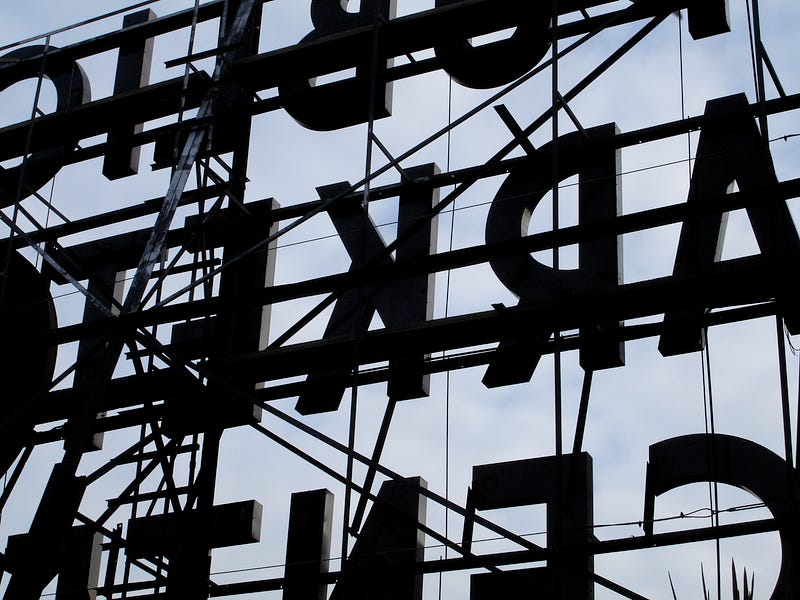
I visited Seattle recently, for the IDEA 2006 conference at the Seattle Public Library. More on both of those subjects later. Meanwhile, some brief notes from my glance at the city. Sadly I didn’t have time read around the place much (as opposed to book-supported trips to Australia, Barcelona or Boston, for example) so you’ll have to make do with observations and photos.
Surrounded by sublime terrain — sublime in the original, God-fearin’ sense of the word — Seattle is one of those cities where the water reaches right in, as with Sydney, as with Stockholm. There’s a wonderfully crisp atmosphere to the place, perhaps due to the icy cold Pacific waters and all those pine trees, and also the natural focal points that a waterfronted, un-super-sized city affords. I’ve been three times, all on business and therefore with frustratingly little time for a look around. This time I managed to escape the magnetic pull of the Seattle Public Library in order to cram in couple of visits to Pike Place Market (thanks to excellent local guide, Andrew Otwell.)
I always like to check out the local market when visiting a city. David Sedaris suggests the local gun control laws can tell you a lot about a place; me, I like to get a feel of the market. The layout and architecture; the signage; the produce on display; opening times; how well-used it is; whether it’s a working market or a tourist attraction, and so on. They can all tell you a fair bit. For instance, many of London’s central, formerly significant markets are now aimed at tourists; in Barcelona, the Mercat Santa Caterina strikes a magical balance between local producers and consumers, contemporary architecture and tourism; Melbourne’s Victoria Market and Sydney’s Growers’ Market tell stories of how food culture has developed in Australia; Zurich’s Burkliplatz is all flowers, organic produce and glossy brown marroni for the Bahnhofstrasse bankers; markets in Milan and Monastir are among my key memories of those cities …
The Pike Place Market felt pretty good. There are elements aimed squarely at tourists — the throwing of giant fish over counters is pure show business — but it feels scruffy, work-a-day and utilitarian enough to suggest a useful, working market for everyday people. A Wednesday morning had a decent background level of activity; a Tuesday lunchtime was packed. There’s a cracking newsstand in the entrance — thanks again for the tip, Andrew — and a mish-mash of stores in the covered stands inside, on varying levels. The Market dates from 1907, with several revisions along the way, and has ended up a haphazardly complex structure straddling old warehouses, loading bays, stalls and shops, and propped up over the steep hills of downtown.

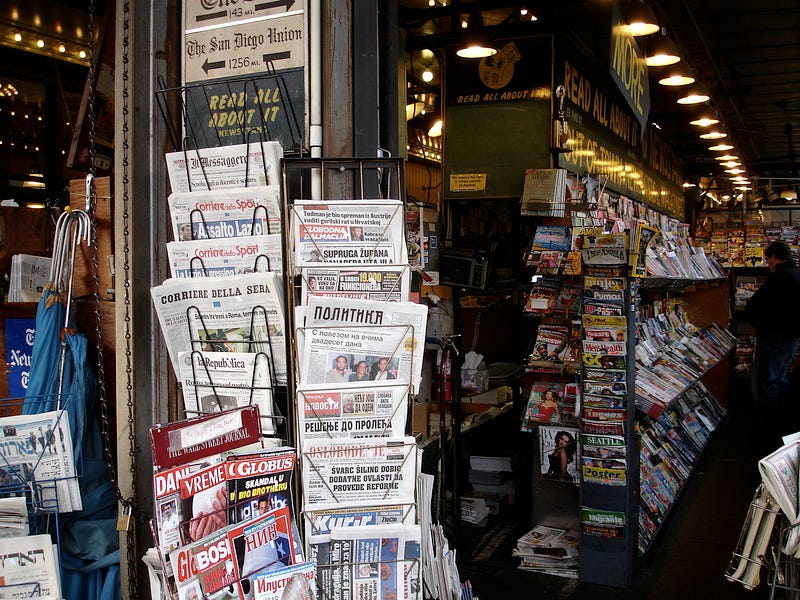

The produce is mainly fish and seafood, featuring monstrous versions of both. Ice chips submerge razor clams; a collection of fearful lobster tails, divorced from their owners’ superstructures, next to a packed box of giant crabs, fleshy underbellies up. Casting your eye over this frozen mass of shells, claws and tendrils, It’s hardly surprising that the North-West waters have generated many tales of sea monsters over the years. (Raban’s Passage to Juneau is great on the native American tales of this sea, as well those from bewildered English sailors of the 18th century, struck dumb by the terrain.)
The distinctive neon signage is particularly noteworthy. It tells you straightaway that you’re in a US city with a bit of history. It’s difficult to know how much of the great interior signs are originals, but the fantastic huge signs atop the market entrance and building date back to the ’30s at least. Apparently the one over the entrance was the first large neon sign west of the MIssissippi. It’s a great thing.
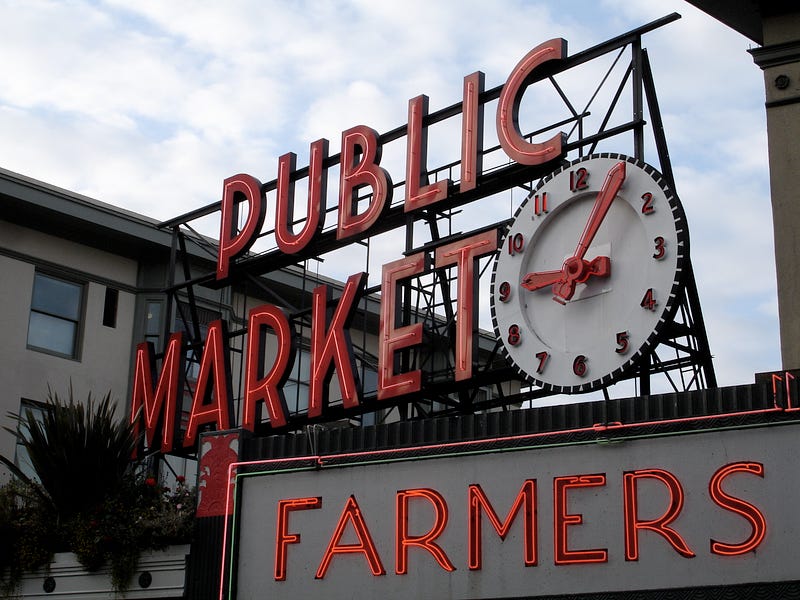
In front of the market lies the sea. Almost. There’s actually a bloody great expressway on a viaduct right there, cutting this element of the city off from the bay, as per Boston and Storrow Drive (and elements of London and Paris; see also Barcelona for a city that turned its back on the sea, only to subsequently discover that its future involved regenerating that waterfront.) The viaduct is structurally unsound, allegedly, and so questions are being asked anyway. Hopefully the whole thing can come down with the traffic routed elsewhere. It would open up the waterfront to the downtown, providing the kind of opportunities realised by cities like Barcelona, though with a solution rooted in Seattle’s history alone. It’s a beautiful thing, that bay, and the viaduct is both an eyesore and an obstruction. As a result, the bay-front, at these points directly below downtown, is still full of storage depots and dead-ends.
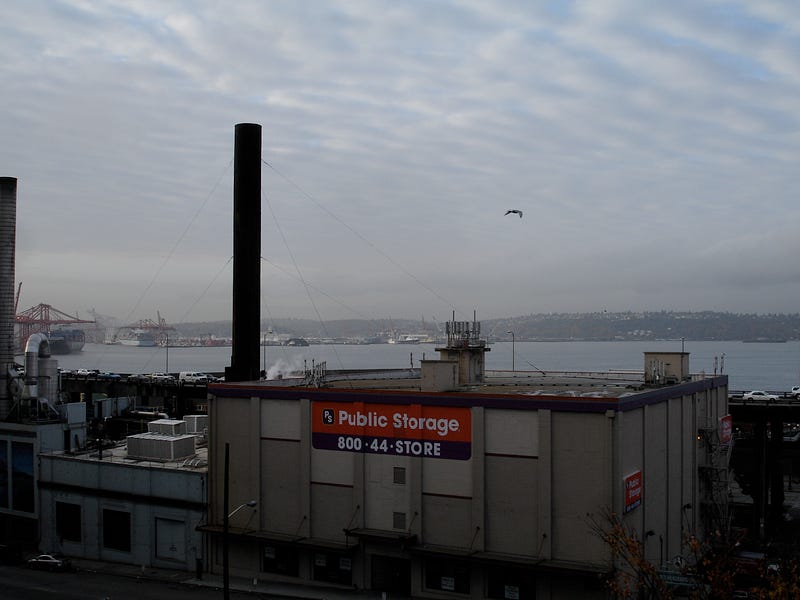

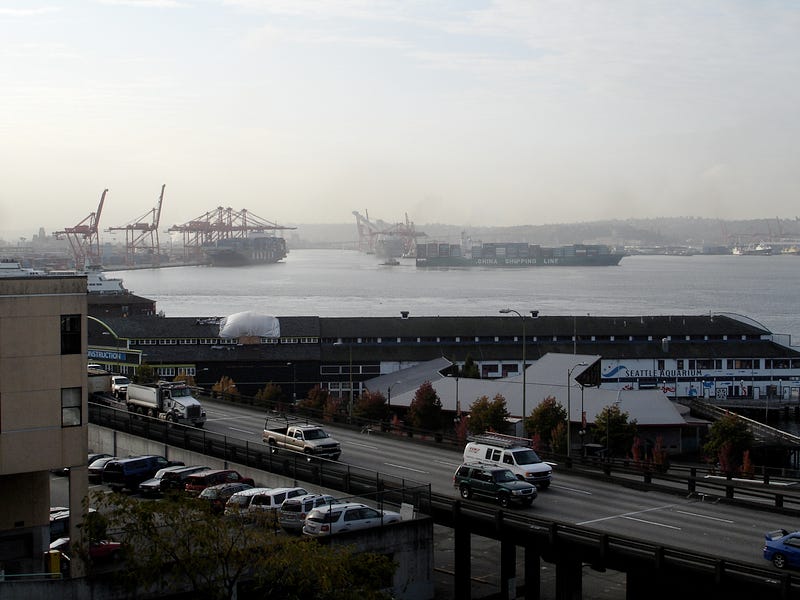
The container port of Seattle appears to be thriving, as is Barcelona’s, so we’re not talking about changing the function of the waterfront wholesale, nor gentrifying it beyond all recognition — simply opening up that large section which is at the bottom of the hill walking from downtown, re-connecting the city with the sea.
Jonathan Raban, who is basically the only author I’ve read on Seattle, talks of the natural attraction of a city which leads you downhill towards the sea. Seattle has an intimate, liveable feel, despite its size, and opening up this waterfront could complete the picture of an extremely appealing city. However, these are the observations of someone largely uninformed by local debates around this issue, which I know are fierce and long-standing.
In terms of other ‘edges of the city’, Seattle-Tacoma airport is very good — in the same elegant mold as other personal favourites, Helsinki, Zurich, Copenhagen. And in stark contrast to the horrific Minneapolis airport, which took shabby to new levels, almost approaching Heathrow’s current entropic demise. Ugly, poorly-lit spaces, with awful fittings and terrible shops. Litter all over the place. Confusing layout and unfocused wayfinding. All apparently combined to drain the life out of the stolid denizens of the mid-West suffering the airport and, as if in response to the surroundings, uniformly wearing some kind of informal dress code of shapeless fleeces and hunting gear; quietly giving thanks before shovelling in unholy bread from Subway … OK, maybe I was jaded by it being my fourth airport of the day at that point, on a weird long haul from Zurich to London to Amsterdam to Minneapolis to Seattle in one day, but put it this way: Minneapolis airport needs a bit of work.
Given that airports are amongst the ultimate in ‘first-impressions’ — perhaps even cities in their own right, increasingly — there’s really no excuse for the endemic neglect hitting Heathrow and Minneapolis. (This builds on Tyler Brulé’s notion that countries need a ‘Ministry of First Impressions’ responsible for running the various entry points: airports, seaports, trains, taxis etc.)
Seattle-Tacoma airport, however, makes the most of the beautifully delicate North-West light, with huge glass windows curving round the apex of its boomerang-shaped structure. To my mind, an airport should make as much of the sky as possible, given the eventual function of the thing, and as with Zürich airport’s departure areas, Sea-Tac does this just fine. If, as with Helsinki, that sky is shrouded with a horizon of pine trees, all the better.
Taxi drivers are also conveyors of first-impressions. And although my taxi to Sea-Tac on the way out was more of a last impression, I got into a great conversation with the driver. He had just moved up from LA three months previously, and was shifting nervously in the seat as he was beginning to realise just how much colder the Seattle winter was going to be compared to SoCal. Taxi driver by day but rapper by night — in a duo called Flame Spittas. I bought a CD off him on the way. He was pretty illuminating on the issue of gangs in Seattle, something I’d never really heard about. Yes, they weren’t in the same league as the ones he’d been on the fringes of in LA — which partly precipitated his move north — but they were there in Seattle, apparently, and fairly brutal. Having steered clear of that scene, and begun to settle in, he was enjoying Seattle and seemed to be staying put. Good luck to him. You don’t find this kind of insight, whether talked up and subjective or not, in the guide books.
All in all, every trip I’ve had to Seattle has left me wanting to stay there a little longer, which can only be a good sign. To counter, or complement, the edge described by the taxi driver, there’s generally a civilised, organised feel to the place — perhaps sharing a ‘northern’ sensibility with other cities in Scandinavia, Canada, Northern Europe? — with an unusually liberal agenda. (Raban is very good on the latter, in numerous essays.) On the basis of less than a week of total elapsed time, split over three visits and largely spent in corporate environments or a public library, the glimpses of the city within, and the terrain without, are tantalising indeed. It feels like A Good City.
(Thanks to Peter Merholz for inviting me to IDEA 2006 in the first place, and again to Andrew Otwell for showing me round.)
This piece was originally published at cityofsound.com on 24 November 2006. More photos from this Seattle walk here.

Leave a comment